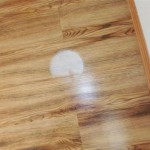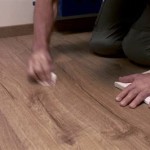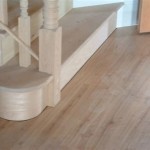How to Install Vinyl Plank Flooring Around a Toilet Bowl
Installing vinyl plank flooring offers a durable and aesthetically pleasing upgrade to any bathroom. However, navigating the complexities of installing it around a toilet bowl presents a unique set of challenges. Achieving a professional, watertight finish requires careful planning, meticulous execution, and the right tools. This article details a step-by-step guide on how to install vinyl plank flooring around a toilet bowl, ensuring a seamless and long-lasting result.
Before embarking on the installation process, thorough preparation is paramount. This involves assessing the subfloor, gathering the necessary tools and materials, and meticulously planning the layout of the vinyl planks around the toilet. Rushing this stage can lead to inaccuracies and ultimately compromise the final outcome.
Key Point 1: Preparation and Assessment
The foundation of any successful flooring installation lies in the condition of the subfloor. The subfloor must be clean, level, and dry. Any existing flooring must be removed, and debris like nails, staples, and adhesives should be cleared. Unevenness can be addressed using a self-leveling compound, ensuring a smooth and uniform surface for the vinyl planks to adhere to.
Next, gather the necessary tools and materials. This includes: vinyl plank flooring, a measuring tape, a pencil, a utility knife with sharp blades, a jigsaw or oscillating multi-tool, a tapping block, a rubber mallet, spacers, silicone caulk (preferably mildew-resistant), safety glasses, and a dust mask. The quantity of vinyl plank flooring needed should be calculated based on the square footage of the bathroom, with an additional 5-10% added for waste and cuts around obstacles like the toilet.
Planning the layout is crucial for aesthetic appeal and efficient material usage. Consider the direction in which the planks will run. Generally, running the planks parallel to the longest wall can visually lengthen the room. Before cutting any planks, dry-lay several rows to visualize the final appearance and identify potential challenges around the toilet and other fixtures.
A critical aspect of the preparation phase involves removing the toilet. While it might seem tempting to simply cut the planks around the base of the toilet, this approach often leads to a less professional and watertight finish. Removing the toilet allows for a cleaner, more precise installation and ensures that the flooring extends seamlessly underneath where the toilet sits. This provides better protection against water damage and facilitates easier cleaning.
To remove the toilet, first shut off the water supply to the toilet fill valve. Flush the toilet to empty the bowl. Use a sponge or wet/dry vacuum to remove any remaining water from the tank and bowl. Disconnect the water supply line from the fill valve. Remove the bolt caps at the base of the toilet and loosen the closet bolts. Gently rock the toilet back and forth to break the wax ring seal. Carefully lift the toilet straight up and away from the flange. Plug the drain opening with a rag to prevent sewer gases from escaping. Thoroughly clean the area around the flange, removing any old wax ring residue.
Key Point 2: Cutting and Fitting Around the Toilet Flange
With the toilet removed and the subfloor prepared, the next step is to accurately cut and fit the vinyl planks around the toilet flange. This requires precise measurements and careful cutting techniques to ensure a snug fit that minimizes gaps.
Begin by determining the center point of the toilet flange. This can be done by measuring the diameter of the flange and marking the midpoint. Use this center point as a reference to transfer the shape of the flange onto the vinyl planks. Place a plank adjacent to the flange and, using a compass or a piece of cardboard as a template, trace the outline of the flange onto the plank. This will create a guide for cutting the plank to fit around the flange.
Alternatively, use a contour gauge. A contour gauge allows you to accurately trace the irregular shape of the toilet flange onto a vinyl plank. Simply press the gauge against the flange, allowing the pins to conform to its outline. Then, transfer the resulting shape onto the vinyl plank using a pencil.
Once the outline is transferred, use a utility knife and a straight edge to score the vinyl plank along the marked lines. For thicker vinyl planks, multiple passes with the utility knife may be necessary. After scoring, carefully snap the plank along the scored lines. For more intricate cuts, such as curves or small openings, use a jigsaw or an oscillating multi-tool equipped with a fine-tooth blade.
Prior to permanently installing the cut plank, dry-fit it around the toilet flange. Ensure that the plank fits snugly against the flange, leaving a small gap (approximately 1/8 inch) for expansion and contraction. This gap will later be filled with silicone caulk. If the fit is too tight, use a sanding block or a file to carefully remove material until the plank fits properly. Repeat this process for any other planks that need to be cut around the flange.
It is important to note that some toilet flanges are not perfectly circular. In such cases, the cutting process may require more intricate techniques and attention to detail. Using a flexible template or a combination of different cutting tools may be necessary to achieve a precise fit.
Key Point 3: Securing and Sealing the Perimeter
After cutting and fitting the vinyl planks around the toilet flange, the final step involves securing the planks in place and sealing the perimeter with silicone caulk. This ensures a watertight and durable installation that prevents water damage and mold growth.
Apply adhesive to the subfloor according to the manufacturer's instructions. Most vinyl plank flooring utilizes a pressure-sensitive adhesive, which requires allowing the adhesive to tack up for a specified period of time before installing the planks. Carefully position the cut planks around the toilet flange, ensuring that they are properly aligned with the surrounding planks. Use a tapping block and a rubber mallet to gently tap the planks into place, ensuring a secure bond with the adhesive.
Once the planks are secured, apply a bead of silicone caulk around the perimeter of the toilet flange, filling the 1/8-inch expansion gap. Use a mildew-resistant silicone caulk specifically designed for bathrooms to prevent mold and mildew growth. Smooth the caulk with a wet finger or a caulking tool to create a clean and uniform seal. Remove any excess caulk with a damp cloth.
Allow the caulk to dry completely according to the manufacturer's instructions before reinstalling the toilet. This typically takes 24-48 hours. Before reinstalling the toilet, inspect the toilet flange for any damage or cracks. If necessary, replace the flange with a new one. Install a new wax ring onto the toilet flange. Carefully position the toilet over the flange and align the closet bolts with the holes in the toilet base. Gently lower the toilet onto the flange, compressing the wax ring. Tighten the closet bolts evenly, alternating between each bolt to ensure a level installation. Do not overtighten the bolts, as this can crack the toilet base.
Reconnect the water supply line to the fill valve. Turn on the water supply and check for any leaks around the toilet base and the water supply connection. If any leaks are detected, tighten the connections or replace the wax ring and/or water supply line as necessary. Install the bolt caps to conceal the closet bolts.
Finally, inspect the completed installation for any gaps or imperfections. Apply additional caulk as needed to ensure a watertight seal. Clean the surrounding area and dispose of any waste materials properly. With proper preparation, careful execution, and attention to detail, installing vinyl plank flooring around a toilet bowl can be a successful DIY project that enhances the beauty and functionality of any bathroom.
Maintaining the newly installed vinyl plank flooring is equally important for its longevity. Regular sweeping and mopping with a pH-neutral cleaner will help prevent dirt and grime buildup. Avoid using abrasive cleaners or scouring pads, as they can damage the surface of the vinyl planks. Promptly clean up any spills to prevent staining. Placing mats or rugs in high-traffic areas can help protect the flooring from wear and tear. Following these simple maintenance tips will ensure that the vinyl plank flooring around the toilet bowl remains beautiful and functional for years to come.

How To Install Vinyl Plank Flooring Around Bathroom Toilet Bowl Perfectly Tips And Tricks

How To Install Vinyl Plank Flooring In A Bathroom As Beginner Home Renovation

How To Install Vinyl Plank Flooring Around Toilet Pot

How To Install Vinyl Plank Flooring Around Bathroom Toilet Bowl Perfectly Tips And Tricks

Toilet On Vinyl Planks Installations

How To Install Vinyl Plank Flooring Into A Bathroom

How To Cut Engineered Wood Laminate Lvt Around Toilets Top Trade Tips

Installing Vinyl Planks Flooring Around Toilet Gooenoughdiy

Can I Install Laminate Flooring Under A Bathroom Toilet And Sink

Lifeproof Vinyl Floor Installation Perfect For Kitchens Bathrooms
Related Posts








